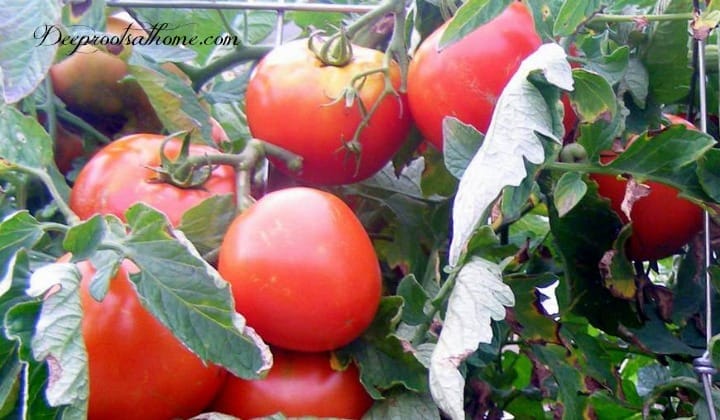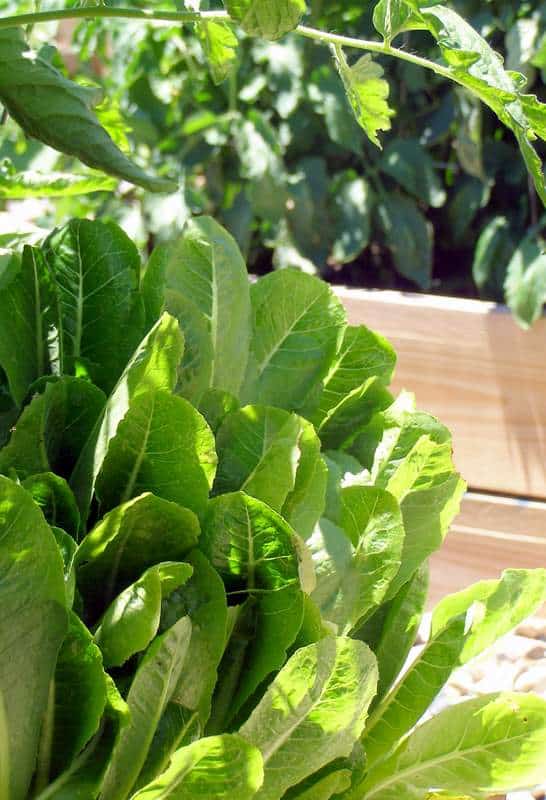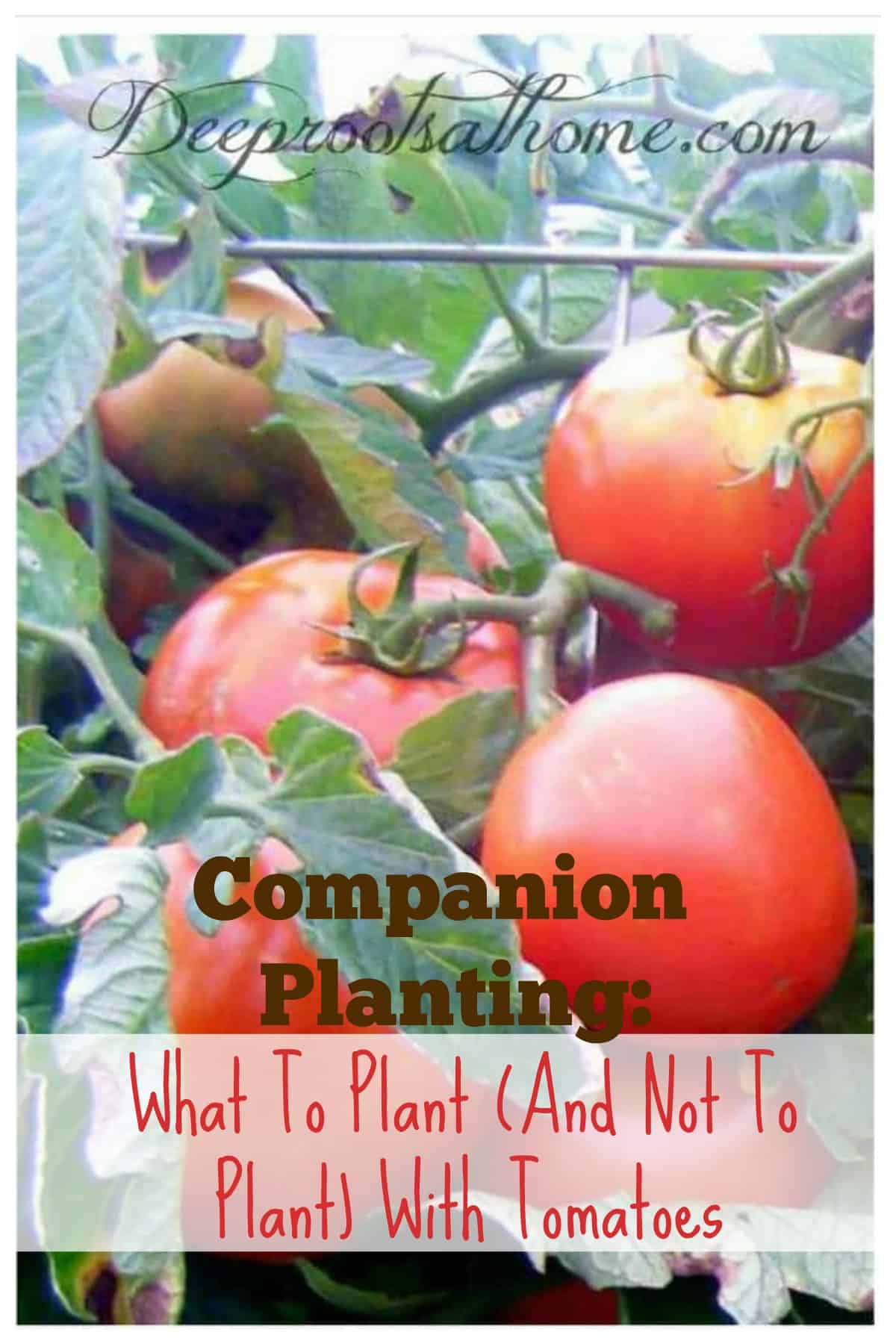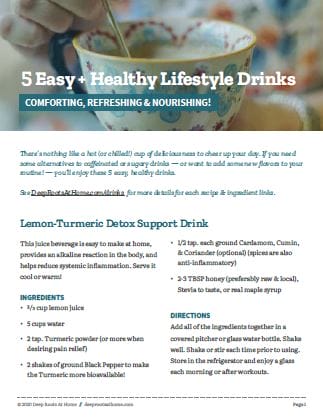Companion planting is pretty important to growing the best homegrown garden tomatoes and with many other things, too! And I will show you why!
When you set a tomato plant in the dirt, gently tamp down the soil around its roots, and water it in, you expect to get a bumper crop of juicy, delicious red fruits. However modern gardeners often overlook time-tested ways to increase yields and create symbiotic relationships in their gardens. Like people thrive with healthy friendships, so it seems do many plants.
In her classic book on companion planting Carrots Love Tomatoes, Louise Riotte has taught generations of gardeners how to use the natural benefits of plants to protect and support each other.
I have read it several times and always learn something new. And now I will share some of the wisdom with you!
Companion Planting Basics
Companion planting is thought to work, in part, because it increases plant diversity. Imagine a hungry insect population finding its way into your garden. If it encounters an entire row of its preferred food, you can bet that the entire row will be decimated before you even notice. However, what if that insect population found one plant of its favorite food, only to be halted from moving onto the next one because there’s a plant it doesn’t like in its way? You would probably notice the damage and might be able to control the problem before losing your entire crop.
And, the insects may move on to “greener pastures” if undesirable plants are mixed in with desirable ones.
In its simplest form, companion planting is alternating two types of vegetables in a single row. This is sometimes called intercropping, and alternating garlic or basil with tomato plants is a popular example.
Intercropping
You can also intercrop more than two varieties. A classic multi-species intercropping example is growing onions, lettuce and carrots together. Each of these plants grows its roots at different levels in the soil, so they don’t compete with each other for nutrients. Above ground, these plants have such distinct growth habits and foliage shapes that they don’t crowd each other for sunlight or space.
Bush beans and peas are popular vegetables to intercrop with plants that are heavy nitrogen feeders. This is because beans and peas are nitrogen fixers, meaning they can utilize atmospheric nitrogen for their growth and reproduction. They have symbiotic bacteria that live on their roots and form nodules rich in nitrogen. Plants growing near them will be able to intertwine their roots with the beans’ roots and utilize the nitrogen stored there. (source)
An ancient and popular companion planting is the Three Sisters garden. The Three Sisters method is a unique Native American way of growing corn, pole bean, and squash. These three plants mutually benefit each other as they grow. The corn provides a living trellis for the pole beans, the pole beans provide nitrogen for use by the corn, and the squash provides living mulch. The three plants create a synergy that produces a greater yield, increased nutrition and more food calories than if only one of the crops was grown alone in the same space. The Anasazi added another sister, flowering bee plant, Cleome serrulata, to the plant mix to improve pollination of the beans and squash and provide pollen to the bees. (source)
Companion Gardening at a Glance
This is a page from Louise Riotte’s book that gave me lots of ideas for approximately how far to space things that were and were not compatible. Such a wonderful potager (kitchen garden); I can just imagine walking through it in my mind.
Tomatoes have a whole group of other plants they are friends with.
What to Companion Plant Near Tomatoes:
Chives, Onions, and Garlic~ Members of the onion family are great companions and beneficial to plant with many types of crops due to the pungent odor they emit. This helps deter many insect pests.
Peppers (sweet and hot) are in the same family (nightshade) as tomatoes and are compatible companions.
Borage helps deter the dreaded defoliating tomato hornworm.
Marigold help deter harmful nematodes from attacking tomatoes. The pungent odor can also help confuse other insect pests. To deter nematodes, the best practice is to grow the marigolds, then chop and till them into the soil at the end of the season.
Nasturtium help deter white fly and aphids.
Carrots companion well with tomatoes because they share space well. The carrots can be planted when the tomatoes are still quite small, and can be happily growing and ready to harvest by the time the tomato plants start to take over the space.
Basil: Growing tomatoes and basil together increases the vigor and flavor of both crops.
Spinach, Lettuce, Arugula: These are also helpful crops for tomatoes. They stay fairly small, and will grow better in the heat of summer when shaded by the growing tomato plants. Although I have not read it anywhere until recently, I always have had good success planting lettuce (Romaine, particularly) in the shade at the side of tomatoes as seen below. Both benefit nicely.
What Not to Plant with Tomatoes:
- Brassicas: Tomatoes and all members of the brassica family repel each other and will exhibit poor growth when planted together. This includes broccoli and cabbages.
- Corn: Tomato fruit worm and corn ear worm are nearly identical, and planting these two crops together increases the possibility that you will attract one (or both) of these pests.
- Fennel: Fennel inhibits the growth of tomatoes (and many other things, too).
- Kohlrabi: Kohlrabi inhibits the growth of tomatoes.
- Potatoes: Planting tomatoes and potatoes together makes potatoes more susceptible to potato blight.
More Tips & Answers for Common Questions:
Plant in same place or a new place??
Wilt disease and blossom end rot??
Smokers warning.
On page 26 of Mrs. Riotte’s book Carrots Love Tomatoes, it says,
- Unlike most other vegetables, tomatoes prefer to grow in the same place year after year.
- If you have a disease problem, plant in a new area.
- Since they are heavy feeders, give them ample quantities of compost or decomposed manure.
- Mulch and water in dry weather to maintain soil moisture and stave off wilt disease and blossom end rot.
- Never water tomatoes from the top. Water from below and water deeply.
- If you smoke, wash your hands thoroughly since tomatoes are susceptible to diseases transmitted through tobacco.
There are so many wonderful tomato varieties to try and a taste to suit every palate, especially in heirloom tomatoes. I hope you find this helpful in growing the best tomatoes ever. And every year you will get better and better at it. Have fun as a family and grow your own tomatoes.
Store-bought tomatoes can never compare to ones you grow yourself!
- Olivia’s Tomato Pie: A Savory, Cheesy Summertime Favorite
- The Totally Easy Way To Freeze Diced Or Pureed Tomatoes
- Heirloom Tomatoes & Their Fascinating, Sometimes Funny Stories
“The federal government has sponsored research that has produced a tomato that is perfect in every respect, except that you can’t eat it. We should make every effort to make sure this disease, often referred to as ‘progress’, doesn’t spread.” ~Andy Rooney
***For the Full Spike Protein Protocol (including NAC) to protect from transmission from the “V” and to help those who took the “V”, go here.

Deep Roots At Home now has a PODCAST! We are covering everything from vaccines, parenting topics, alternative medicine. Head over today and like, share and download a few episodes! https://buff.ly/3KmTZZd
If you want to stay connected, here is one way…
You can also find me on Instagram, MeWe and Telegram.
And please join me for my FREE newsletter. Click here.
©2024 Deep Roots at Home • All Rights Reserved




















Related